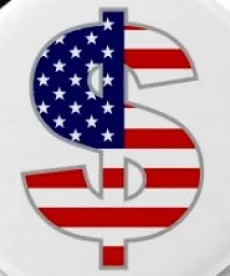Earlier this week, the Federal Reserve issued a paper entitled “Strategies for Improving the U.S. Payment System: Federal Reserve Next Steps in the Payments Improvement Journey”. The paper is intended to provide payment industry stakeholders an update on the Fed’s efforts in the last couple years to help improve the speed, safety and efficiency of the U.S. payment system.
The paper supplements the Fed’s 2015 paper entitled “Strategies for Improving the U.S. Payment System”, which outlined the Fed’s overall strategic vision and plan for improving the U.S. payment system. The 2015 paper called upon payment system stakeholders to collaborate with the Fed on how best to achieve the Fed’s desired outcomes for improving the U.S. Payment System in the following five areas: (1) speed, (2) security, (3) efficiency, (4) international payments and (5) collaboration.
The paper published yesterday describes efforts made by the Fed and participating payment system stakeholders since 2015 with respect to each of these 5 goals, along with new tactics the Fed plans to employ in furtherance of these goals. Progress has been made in several areas to identify industry needs, challenges and potential solutions. In a nutshell, the U.S. payments industry is in need of interoperable, easily accessible, secure, efficient, cost-effective and compliant solutions that will enable domestic and cross-border payments to be completed and settled in real time, on a 24x7x365 basis. Finding solutions that address this need to the satisfaction of all payment industry stakeholders undoubtedly presents an extremely challenging task for the Fed. The Fed’s Faster Payment Task Force has analyzed over 20 proposals for potential payment solutions in the last 2 years, including solutions that rely on application programming interface (API), digital currency and blockchain (distributed ledger technologies). However, the Fed and participating stakeholders are still navigating their way through a host of complex challenges that will need to be resolved in order to achieve the Fed’s desired outcomes by their stated goal of 2020.
For payment system stakeholders, many questions remain unanswered, including:
-
What role will the Fed play in bringing a solution to market? In the latest paper, the Fed indicated that they intend to actively engage with industry stakeholders to determine how best to enhance Federal Reserve settlement services to support real-time settlement of payment transactions on a 24x7x365 basis. The Fed also intends, before year end, to explore and assess the need, if any, for the Federal Reserve to act as a service provider in supporting faster payments, beyond its current role as a provider of settlement services. Although the Fed is arguably best positioned to act as the primary operator of this solution, to date, the Fed has not made any sort of commitment to serve in this capacity.
-
What sort of payment rules and standards will apply? Payments in the U.S. are already subject to a cumbersome patchwork of various rules and regulations depending on the payment type. Nevertheless, in July 2015, the Consumer Financial Protection Bureau issued some guiding principles to ensure that any new faster payment systems are secure, transparent, accessible and affordable to consumers and provide robust protections with respect to fraud and error resolution. It remains to be seen whether the CFPB or the Fed will impose an additional subset of requirements for faster payments, but imposing an additional layer of rules and regulations to support faster payments will no doubt impede adoption and increase service costs.
-
What will a faster payment solution cost? For faster payment solutions to succeed, adoption by both providers and end users is critical. Obviously, the cost for accessing a faster payment solution is a key consideration for both providers and end users and it remains to be seen whether a faster payment solution can be offered in a cost-effective manner.
-
Who will benefit from the solution and who will be left behind? Interoperability of competing payments solutions will also be critical for broad adoption of a faster payments solution. This appears to be top of mind for the Fed, but it remains to be seen whether certain payment providers will be disadvantaged or replaced by a faster payments solution.
The Fed and participating stakeholders have made progress on several fronts to assist in bringing a faster payments solution to the U.S. by 2020, but several looming challenges remain. Nevertheless, the Fed appears to be pushing forward with several new tactics to assist in addressing these challenges so hopefully the Fed and participating stakeholders will be able to stay on pace for their 2020 goal.
Amy Lauck authored this post.


 />i
/>i
